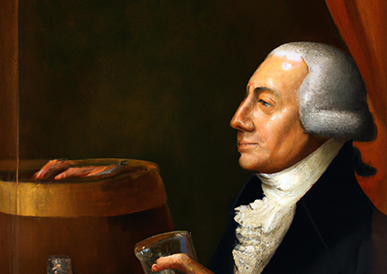A Beginner's Guide to Kentucky Straight Bourbon Part 1: History
If you’re new to the world of bourbon, it can be hard to know where to start. That’s why we’ve created this beginners guide to Kentucky straight bourbon. In this series, we’ll explore the history, the distilling process, and tasting notes of this American spirit. By the end of this blog series, you’ll have a better understanding of what makes Kentucky straight bourbon special and how to appreciate it. We’ll start with a brief history. Let’s dive in!
Kentucky straight bourbon is an American whiskey that has become synonymous with quality, craftsmanship, and tradition. It's made from at least 51% corn and aged in new, charred oak barrels. The unique combination of ingredients and the aging process give Kentucky straight bourbon its distinct flavor and aroma profile.

Kentucky straight bourbon has a rich and fabled history that dates back to the late 18th century. The whiskey gets its name from Bourbon County, Kentucky, where it was first produced. While the exact origin of bourbon is unclear, it's believed to have been created by early settlers who used surplus corn to make a whiskey that was both flavorful and economical with distilling techniques inspired by the Irish and Scottish.
At some point, distillers started aging the whiskey in charred oak barrels. This helped to mellow the harsh flavors of the raw spirit originally produced. While the exact year is unclear, it is widely believed to have started at the end of the 18th century. This no doubt played a critical role in the development of bourbon as a distinctive style. Over time, the popularity of bourbon grew, and it became an essential part of American culture. In the 19th century, the demand for bourbon increased, and the industry began to flourish. The passage of the Bottled-in-Bond Act in 1897 helped to standardize the product of bourbon and insure its quality. However, the passing of Prohibition in the 1920s dealt a severe blow to the bourbon industry and forced many distilleries to close.

The popularity of bourbon continued to grow in the post-Prohibition era. But the 1980s saw a decline in bourbon sales again due to a variety of factors. This includes changes in consumer tastes shifting to clear spirits like gin and vodka. And yet the industry rebounded again. In the 90s it continued to grow thanks to the craft distilling movement fueled by the rise of the cocktail culture and a renewed interest in artisanal spirits.
Today Kentucky bourbon is a symbol of American craftsmanship and tradition. It is regulated by civil law and must meet certain conditions to be labeled as “Kentucky straight bourbon”. Here's a short list of some of the requirements.
-
The whiskey must be distilled and aged in the state of Kentucky.
-
The mash bill, or recipe, for the bourbon must contain at least 51% corn.
-
The bourbon must be aged in new, charred oak barrels for a minimum of two years.
-
The bourbon must be bottled at a minimum of 80 proof (40% alcohol by volume).
-
Kentucky straight bourbon must not contain any added colors or flavors.
The future of Kentucky straight bourbon remains bright, and it continues to be celebrated by whiskey enthusiasts around the world.
Here are a few bourbon suggestions for people looking to start exploring the world of bourbon. With a range of flavors and styles, these bourbons are approachable, easy to drink, and available for in-store or online. Whether you're sipping it neat, on the rocks, or in a classic cocktail, these bourbons are an excellent introduction to the rich history and complex flavors of American whiskey.



-SW




